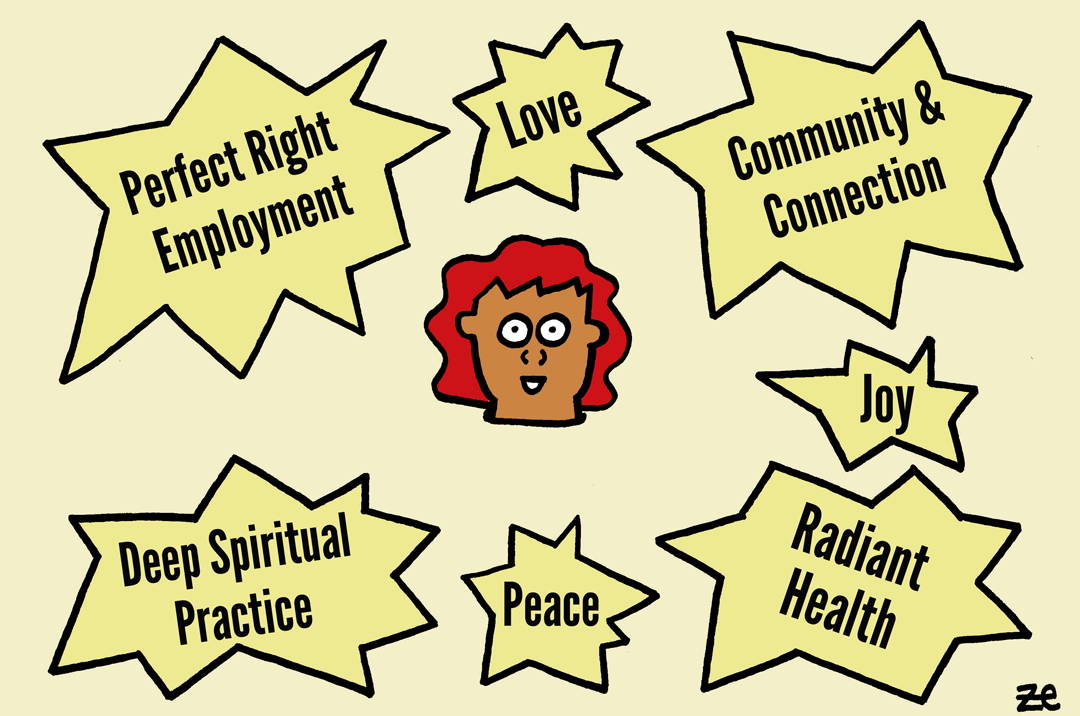
I love affirmations.
Affirmations – positive, affirmative statements in the present tense designed to shift your thinking around a specific issue – have improved my life a thousand fold.
But let’s be honest.
Affirmations get a bad rap.
People diss them. They make fun of them. (Stuart Smalley. Need I say more?)
At the root of this dissing and fun-making is affirmation’s lack of believability.
We’re affirming we have money, but we don’t have any money, so when we affirm we have money, we don’t buy it. (So to speak.)

To counter this tendency, there are a few things you can do.
In this little series, I’m going to cover four specific areas that can turn your affirmations into Super-Amazing-Incredible Affirmations.
Okay, here we go!
In this post, we’re going to talk about Composition.

Affirmations are only as good as the words that make them.
For example, what do you think of this affirmation?
Today I will try to not suck as much. I’m pretty sure I’ll be able to do it. Maybe.
Yes, I’m exaggerating to make my point, but that’s because it’s my blog and I can.
Those of you who are hip to affirmations will notice all of the things wrong with this one.
- It’s not in the present tense: I will try. . .
- It incorporates a negative word (suck) that evoke negative vibes (suckage).
- It’s not full-out positive: try, pretty sure, maybe.
When crafting your awesome affirmations, it’s good to stick to the basics:
1. Make it in the present tense.
I am getting better and better every day.
I approve of myself just the way I am.
I am opening up to abundance in all areas of my life.
2. Use I am as often as you can.
I am is a powerful phrase. It keeps the locus of power where it belongs.
On you.
In the present.
I am is emblematic of the Divine Creative Power that made you. It’s the power that gets activated when you say your affirmations, kicking into motion and creating your amazing life:

3. Use first, second and third person.
In addition to I am, which is the first person, you can also say your affirmations in the second and third person.
Like this:
I am open to amazing new experiences.
You are open to amazing new experiences.
Z is open to amazing new experiences.
These different perspectives allow different parts of your self-awareness to get activated. They take advantage of your awareness of how you are seen by others, and integrate the affirmation into this “outside” perspective.
Also, depending on the affirmation, you might want to use your childhood nickname. This is especially good for healing old childhood gunk.

4. Keep it positive
Use strong, powerful affirmative words.
Sometimes it can be good to write out everything you don’t want, and make the affirmation the positive version of that.
I don’t want to be poor can turn into I am a wealthy, wealthy woman!
5. Pick a good length
If you have an affirmation you want to say all the time, come up with something short. Then you can repeat it to yourself all day.
Longer affirmations are good for other uses, such as reading or saying out loud as a morning practice.
So those are the basics of composition, as far as words and structure.
Another key component to affirmations is emotion and believability.
Working with these components is the topic of the next post in the series. I’m looking forward to it!
Or should I say:

What is your experience with crafting affirmations? Share your comments below!
Want Sneak Peeks, Insider Info, and other Fun Stuff?! Become a member of OhMyGod Life!


Thank you for this! I have been doing affirmations for a while, and some of what you say here clarifies some things for me.
Awesome. Glad to be of help! 🙂